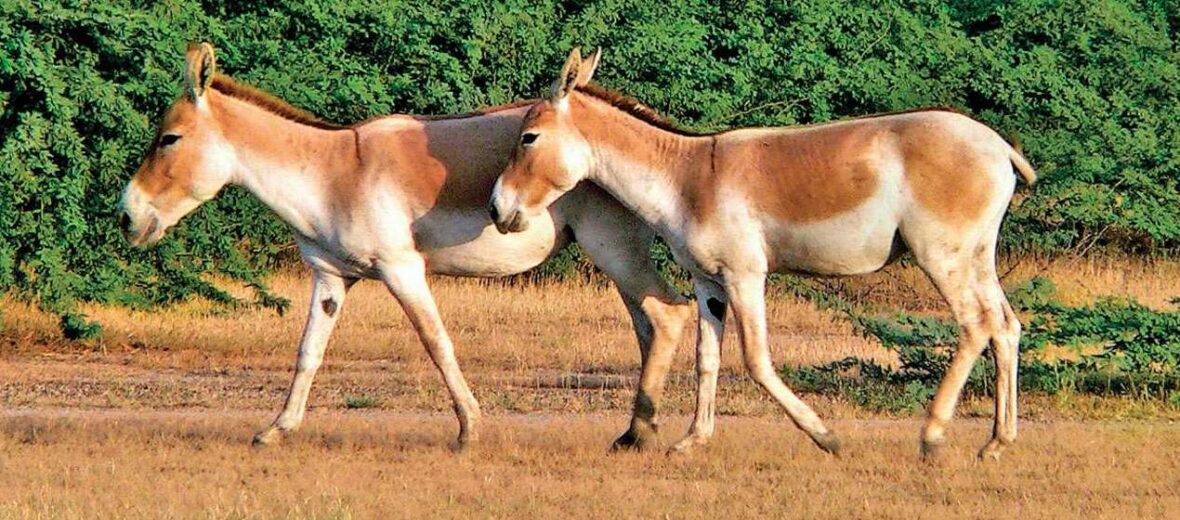
The Indian wild donkey, aka wild ass, Ghudkhur, Khur, or Indian onager (in the local Gujarati language), can primarily be found in Gujarat, in the Indian subcontinent. These donkeys prefer saline deserts, shrublands, and arid grasslands. Recent numbers show their populations slowly increasing. However, they are still listed as Near Threatened due to habitat destruction, civil unrest, and climate change, to name a few.
First the Stats…
Scientific name: Equus hemionus khur
Weight: Up to 640+ lbs.
Length: Up to 6.9 feet
Height: Up to 4 feet, at the shoulder
Lifespan: Up to 25 years
Now on to the Facts!
1.) Although their population is increasing, there are only an estimated 4,800 Indian wild donkeys in the wild to date.
2.) They graze on on grass, leaves, fruits, crop, Prosopis pods, and also saline vegetation.
3.) These donkeys don’t have any known natural predators.
4.) A group of donkeys is called a herd.
5.) Indian wild asses are crepuscular (active at dawn and dusk).
But wait, there’s more on the Indian wild donkey!
6.) These donkeys need to drink water at least once a day.
7.) Males are solitary or live in small groups of 2 – 3.
Did you know…?
These wild asses can run at speeds of up to 50 mph!
8.) Females live in larger herds comprised of adult females and their foals, yearlings, and sub-adult males.
9.) Mares (females) give birth to a single foal, each season.
10.) Their populations tend to wax and wane due to the prevalence of monsoons. More monsoons means more donkeys.
Now a Short Indian Wild Donkey Video!
Be sure to share & comment below! Also, check out the Critter Science YouTube channel. Videos added frequently!
Want to suggest a critter for me to write about? Let me know here.



